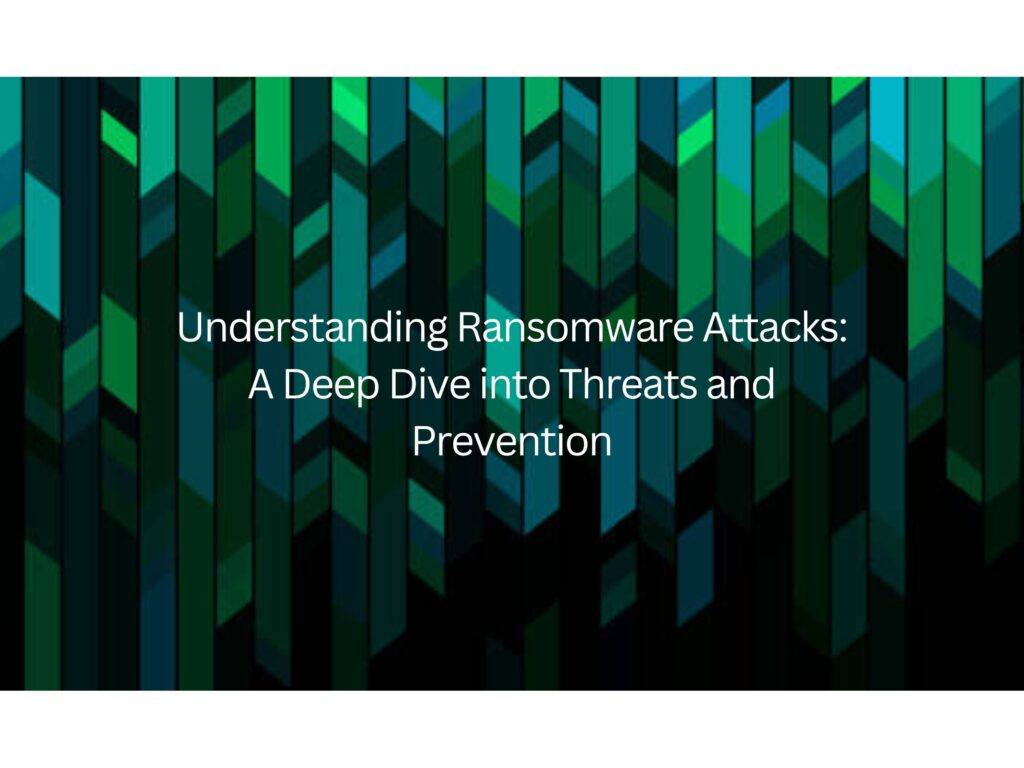In the ever-evolving landscape of cybersecurity, one threat has gained notoriety for its destructive potential – ransomware. This malicious software infiltrates computer systems, encrypts files, and demands a ransom for their release. In this blog post, we’ll explore what ransomware is, how it works, and strategies to protect against such attacks.
What is Ransomware?
Ransomware is a type of malicious software designed to deny access to a computer system or files until a sum of money, often in cryptocurrency, is paid. Cybercriminals employ various tactics to distribute ransomware, including phishing emails, malicious links, and exploiting software vulnerabilities.
How Does Ransomware Work?
- Infection: Ransomware typically enters a system through seemingly harmless sources. Users may unknowingly download infected files or click on malicious links, triggering the installation of the ransomware.
- Encryption: Once inside the system, the ransomware encrypts files, rendering them inaccessible to the user. Advanced encryption algorithms are used to make decryption without the specific key practically impossible.
- Ransom Note: After encryption, a ransom note is displayed, informing the victim of the attack and providing instructions on how to pay the ransom. Payment is often demanded in cryptocurrencies for its anonymity.
- Payment and (Un)Promise: If the victim chooses to pay the ransom, they receive instructions on how to send the funds. However, paying does not guarantee file recovery, and some cybercriminals may vanish without providing decryption keys.
Preventing Ransomware Attacks:
- Backup Regularly: Regularly back up important files on an external device or secure cloud service. This ensures that, in the event of an attack, you can restore your data without succumbing to ransom demands.
- Update Software: Keep your operating system and all software up to date. Regular updates often include security patches that address vulnerabilities exploited by ransomware.
- Employee Training: Educate employees on cybersecurity best practices, emphasizing the dangers of clicking on suspicious links or downloading attachments from unknown sources.
- Use Antivirus Software: Employ reputable antivirus and antimalware software to detect and neutralize potential threats. Regularly update the software to ensure it can identify the latest strains of ransomware.
- Network Segmentation: Divide your network into segments to prevent lateral movement in the event of a breach. This can limit the impact of ransomware by isolating affected areas.
- Email Filtering: Implement email filtering solutions to block phishing attempts and malicious attachments. Many ransomware attacks originate from deceptive emails.
Responding to a Ransomware Attack:
- Isolate Infected Systems: Immediately disconnect infected systems from the network to prevent the ransomware from spreading further.
- Report to Authorities: Report the attack to law enforcement agencies. While it may be challenging to track down cybercriminals, reporting increases the chances of developing effective countermeasures.
- Seek Professional Assistance: Engage cybersecurity professionals to assess the extent of the damage, identify the ransomware strain, and explore potential recovery options.
- Do Not Pay the Ransom: The FBI and cybersecurity experts advise against paying ransoms, as there is no guarantee of receiving decryption keys, and payment funds criminal activities.
In conclusion, ransomware attacks pose a significant threat to individuals and organizations alike. By understanding how these attacks occur and implementing preventive measures, users can fortify their digital defenses. Stay vigilant, stay informed, and employ a multi-layered security approach to mitigate the risks posed by ransomware.




